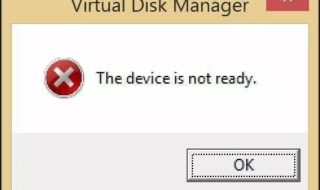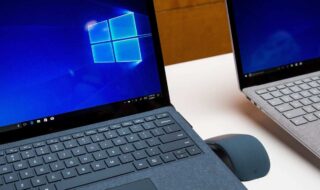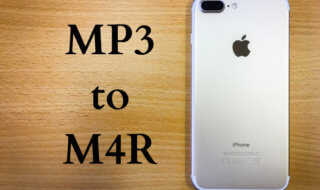If you are looking to manufacture your prototypes or final products but do not know which precision machines to use, which will both save your production cost and give you a high-quality end product, then this article is for you. Although CNC turning and CNC milling are both precision machines, they operate very differently from one another. Both of them are suitable for different applications according to the project’s specifications, such as the shape of the part, material nature, features, size of the part, and other factors. So, understanding each of these precision machines is very necessary to select a suitable machine for your project, which will give premium quality results but also help you to save a lot of time and money. Let us dig deep to explore CNC turning and CNC milling machines’ working mechanisms, applications, similarities, differences, limitations, and a lot more.

How to Choose between CNC milling and CNC turning
Contents
1) Similarities and Differences between CNC milling and CNC turning
CNC milling and CNC turning are both used to make required parts or final products at prototyping as well as at the production level. Although CNC milling and CNC turning look the same, they are pretty different processes.
For understanding these processes, both are compared below to know the similarities and the differences between them.
a) Similarities between CNC milling and CNC turning
There are basically 4 similarities between these machines, such as;
- Heat Generation
- Manufacturing Materials
- Subtractive Manufacturing Process
- Computer Numerical Control System
Heat Generation: Both machines produce heat while shoving out unnecessary material from the workpiece. Often fluids are pumped while drilling to avoid damage to the machine and workpiece by heat.
Manufacturing Materials: Both machines can be operated with a wide variety of metals, plastics, wood, and glass. In addition, CNC milling, due to its structure, can be used with some more materials.
Subtractive Manufacturing Process: Both of these machines are subtractive manufacturing machines, which means they make parts by removing unnecessary material from the workpiece.
Computer Numerical Control System: CNC or Computer Numerical Control system is a programming system for machine operation such as spindle rpm, toolpath, and other factors. The CNC system allows more efficiency, less staffing, and more production. In this way, the CNC system enables 24/7 working of machines to create huge profits. Both CNC milling and CNC turning machines use this technology.

RapidDirect’s CNC Processed Part
b) Differences between CNC milling and CNC turning
Despite the above similarities, there are many differences between CNC milling and CNC turning machines, which are listed below;
- Spinning parts
- Moving parts
- Material nature
- Final product shape
- Tool contact with the material
Spinning Parts: In CNC milling, the tool spins at high speed against a stationary material. While in CNC turning, the spindle spins the material at high speed against a stationary tool. This is the main difference between these two machines.
Moving Parts: Besides spinning, there is relative movement between the tool and the material to make the required shape out of the workpiece. For this, in CNC milling, either spindle move or material move, or both move. While, in CNC turning, only the tool moves while the material remains spinning, fixed in its position.
Material Nature: Both of these machines can work with a large variety of metals, plastics, woods, and glass.
Final Product shape: CNC milling machines usually work for flat or sculptured shapes end products. While in CNC turning machines, cylindrical or conical end products can be made with high precision.
Tool contact with the material: In CNC milling machines, spinning tool cut material at multi-points by periodically contacting the surface. While in CNC turning, the tool is in continuous contact with the spinning material.
2) When to Use CNC milling?
Whether you can use a CNC milling machine or not for the project depends on the final product’s requirements, such as the product’s shape, material nature, and geometry.
CNC milling is a process in which the spindle spins the cutting tool at a very high rpm. Then this tool moves against the surface of the material to shove out waste material and form the end structure of the workpiece. As the cutting tool spins on a non-revolving material, it works best with square or sculptured-shaped objects.
CNC milling is used for two basic purposes;
- For finishing of the product
- For making product from the start
CNC milling is sometimes used to finish other machines’ processed parts, such as making holes, slots, chamfers, serrations, grooves, e.t.c in the already processed parts to finish them.
CNC milling machines are also used to subtractive manufacture parts from the start. Due to their flexibility and diversity, CNC milling machines are used in automotive, aerospace, military, medical, robotics, and a lot of other industries. CNC milling machines are also used for personal hobbies.

RapidDirect’s CNC Milling process
3) When to Use CNC turning over CNC milling?
CNC turning machines, also known as CNC lathe machines, are those in which a chuck holds the material, and a spindle spins the material at a very high speed. Then, the stationary cutting tool pushes against the material to shove out the unnecessary material out of the workpiece. CNC turning machines may also have a secondary spindle to process the chuck side of the workpiece.
As the material spins against the stationary, creating a spiral toolpath, and the end result product will be round or conical. So, it is best to use a CNC turning machine over a CNC milling machine when you need a round-shaped end result.
There is one other main factor to consider besides shape when choosing CNC turning for your project that is the outer diameter of your product. Most CNC turning machines have a limited outer diameter value. And the excessive part of the product is needed to separate and processed individually, which will increase production costs.
CNC turning machines are widely used to make round-shaped objects, such as washers, nuts, ball bearings, bolts, casters, e.t.c. They are also used in every industry to produce complex round shape parts for further processing by various machines.

CNC Turning Machine
Summary
CNC milling and CNC turning may have the same Computer Numerical Control system, and even the nature of the material used may be the same, but the processes, cutting tools, the shape of the end product, e.t.c are completely different. There are also other factors to consider when choosing machine kind for your project, such as material shear strength, hardness, tensile strength, chemical resistance, heat resistance capabilities, e.t.c. Cutting tool length and nature also affect the production of the end product, such as longer cutting tools do not give fine cutting quality at the far end and cause more vibration, which will ultimately lead to breakage of machine or workpiece parts if burdened.
There are many professional companies such as Rapid Direct which provides CNC milling services as well as CNC turning services for your unique project. They have AI software and professional engineers to check the functionality of your product design, you just need to upload your CAD file on their website, and they will do the rest of the work. They will tell you which kind of precision machining process is suitable for your project and how much your whole project will cost. In short, a professional prototyping company would save your time and cost.



